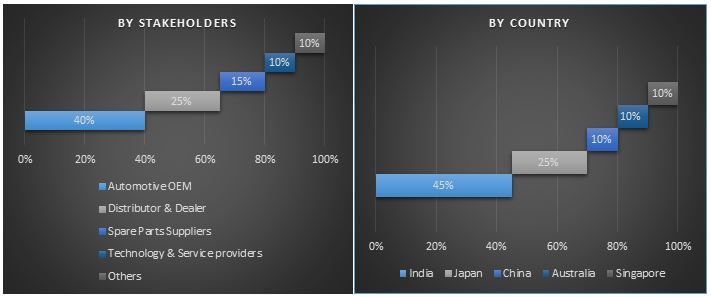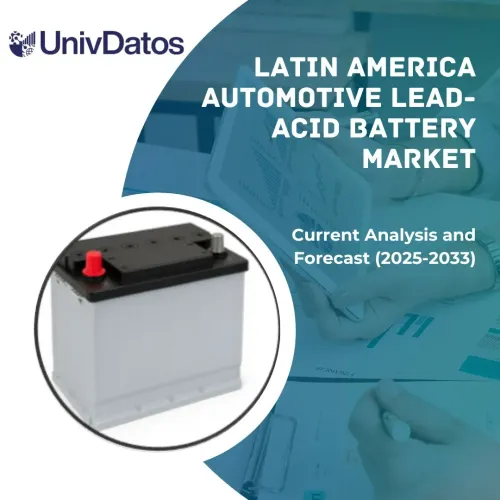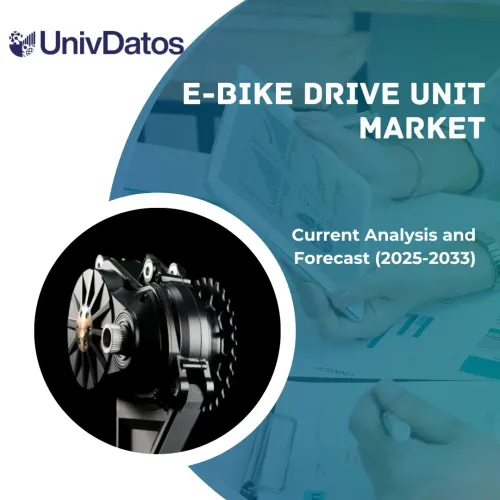- Home
- About Us
- Industry
- Services
- Reading
- Contact Us
Asia Pacific Market Insights on Automotive Radar: Insights and Forecast (2018-2024)
Emphasis on Radar Range (Short Range Radar & Mid-Range Radar (S&MRR), Long Range Radar (LRR)), Applications(Adaptive Cruise Control, Autonomous Emergency Braking, Intelligent Parking Systems, Blind Spot Detection, Collision Mitigation System, Others) – Insights and Forecast, 2018-2024
Asia Pacific is the largest car manufacturing hub in the world and is home to some of the prominent car manufacturers such as Nissan, Hyundai, Honda, Kia, and Toyota, among others. The Asian market is also an emerging market for automotive sector, which is primarily backed by the low-cost country sourcing and high-level of industrialization in the region. Rising number of accidents paired with increasing demand for safer vehicle mobility and strict government regulations and initiatives for creating innovative radar systems are the major factors driving the deployment of radar technology in vehicles in the Asian countries such as India, China and Thailand, among others. Additionally, growing trend of autonomous vehicles and rising vehicle electrification is expected to foster the growth of automotive radar in the region. The increased sales of vehicles in Asian countries would further provide wider range of growth opportunity for the vendors operating in the industry to increase their revenue share. However, counterfeiting in India and China and high import and taxes charged by government in several countries are posing as the major challenges in the region.
Insights Presented in the Report:
- Asian Automotive radar market is segmented based on the range of the radars. It includes short and midrange radar (S&MRR) and long range radar (LRR). In 2017, S&MRR segment dominated over LRR however LRR is anticipated to be the fastest growing market with a CAGR of 25.9% during the forecast period (2018-2024).
- Based on different application areas, the market is categorized as Adaptive Cruise Control (ACC), Autonomous Emergency Braking (AEB), Intelligent Parking System (IPS), Blind Spot Detection (BSD), Collision Mitigation System (CMS) and others. Among these application areas, adaptive cruise control is expected to be the largest market during the forecast period. On the other hand, the market value of autonomous emergency braking application is anticipated to be the fastest growing during the forecast period.
- The study further includes the segmentation across different frequency bands such as 24 GHz and 77 GHz. Due to the increase in demand for 24 GHz radars in Asia Pacific, this segment held the highest market share in 2017. However by 2021, the market value of 77 GHz radars is anticipated to exceed the market of 24 GHz radar and is anticipated to remain dominant by 2024.
- Asian automotive radar market is also fragmented across different vehicle types that include passenger cars, luxury cars and commercial vehicles. In 2017, passenger vehicles segment dominated the market with a market value of $537.27 million. Adding to this, the increase in demand of radar systems in the luxury vehicles segment is expected to propel the luxury vehicles segment making it the fastest growing market during the forecast period.
- For an in-depth understanding of the Asian automotive radar market, it is further segmented across different countries that are China, Japan, India, Singapore, South Korea, Australia and rest of Asia Pacific. In 2017, China dominated Asian market, the major factors attributed for this were huge automotive industry, presence of several radar suppliers and rise in economic conditions of the consumers, among others.
Top Companies Profiled:
Some of the major players profiled in the report include Continental AG, Robert Bosch GmbH, Denso Corporation, Delphi Automotive Plc, Infineon Technologies AG, NXP Semiconductors NV, Valeo SA, Analog Devices Inc., Hella KGaA Hueck and Co, and Texas Instruments Inc.
Reasons to buy the Report:
- The study includes market sizing and forecasting analysis validated by authenticated key industry experts
- The report presents a quick review of overall industry performance at one glance
- The report covers in depth analysis of prominent industry peers with primary focus on key business financials, product portfolio, expansion strategies and recent developments
- Detailed examination on drivers, restraints, key trends and opportunities prevailing in the industry.
- Examination of industry attractiveness with the help of Porter’s Five Forces analysis
- The study comprehensively covers the market across different segments
- Deep dive regional level analysis of the industry
Customization Options:
The Asia-Pacific Automotive Radar Market can be customized to country level or any other market segment. Besides this, UMI understands that you may have your own business need, hence we also provide fully customized solutions to clients.
Table of Content
Analysing historical market, estimation of the current market and forecasting the future market for Asia-Pacific Automotive Radar technology were the three major steps involved in creating and analysing the overall adoption rate of Automotive Radar in major Asian countries. Exhaustive secondary research was conducted to collect the historical market of the technology and overall estimation of the current market. Secondly, to validate these insights, numerous findings and assumptions were taken into consideration. Moreover, exhaustive primary interviews were conducted with industry experts across value chain of the Asia-Pacific Automotive Radars market. After all the assumption, market sizing and validation of market numbers through primary interviews, top-down approach was employed to forecast the complete market size of the Asia-Pacific Automotive Radar market. Thereafter, market breakdown and data triangulation methods were adopted to estimate and analyse the market size of segments and sub-segments of the Asia-Pacific automotive radar market. Detailed methodology is explained below:
Analysis of Historical Market Size
Step 1: In-Depth Study of Secondary Sources:
Detail secondary study was conducted to obtain the historical market size of the Asia-Pacific Automotive Radar Market through company internal sources such as annual report & financial statements, performance presentations, press releases, inventory records etc. and external sources including trade journals, news & articles, government publications, economic data, competitor publications, sector reports, regulatory bodies publications, safety standard organizations, third-party database and other creditable publications. For vehicle production and sales related data International Organization of Motor Vehicle Manufacturers was used.
Step 2: Market Segmentation:
After obtaining historical market size of the overall market, detailed secondary analysis was conducted to gather historical market insights and share for different segments & sub-segments of the Asia-Pacific Automotive Radar Market. Major segments included in the report are sensor type, radar range, frequency bands, application, and vehicle type. Further analysis was also done for sub-segments of the major segments of the Asia-Pacific Automotive Radar Market.
Step 3: Factor Analysis:
After acquiring the historical market size of different segments and sub-segments, detailed factor analysis was conducted to estimate the current market of the Asia-Pacific Automotive Radar technology. Factor analysis was conducted using dependent and independent variable such as the Changing vehicle safety regulation, increasing adoption of advanced driver assistance system (ADAS) technology and increasing number of radar sensors used per vehicle. Stringent government regulations, mandating rear-view camera system and lane departure warning technologies in vehicles which has also stimulated the growth of the automotive radar technology were considered while conducting the study. Historical trends of the Asia-Pacific Automotive Radar Market and their year-on-year impact on the market size and share in the recent past was analyzed. Demand and supply side scenario was also thoroughly studied.
Current Market Size Estimate & Forecast
Current Market Sizing: Based on actionable insights from the above 3 steps, we arrived at current market size, key players in major applications and markets, market shares of these players, industry’s supply chain, and value chain of the industry. All the required percentage shares, splits, and market breakdowns were determined using the above-mentioned secondary approach and were verified through primary interviews.
Estimation & Forecasting: For market estimation and forecast, weightage was assigned to different factors including drivers, restraints, and trends and opportunities available in the market. After analyzing these factors, relevant forecasting techniques i.e. Bottom-up/Top-down was applied to arrive at the market forecast pertaining to 2024 for different segment and sub-segments in major Asian countries. The research methodology adopted to estimate the market size encompasses:
- The industry’s market size of the Asia-Pacific automotive radar technology, in terms of value (US$) and the overall rate of adoption of Automotive Radars technology in major Asian country
- All percentage shares, splits, and breakdowns of market segments and sub-segments
- Key players in major applications and markets as well as market share of each players. Also, the growth strategies adopted by these players to compete in the ever-growing Asia-Pacific automotive radar technology market
Market Size and Share Validation
Primary Research: In-depth interviews were conducted with the Key Opinion Leaders (KOLs) including Top Level Executives (CXO/VPs, Sales Head, Marketing Head, Operational Head, and Regional Head etc.). Primary research findings were summarized, and statistical analysis was performed to prove the stated hypothesis. Input from primary research were consolidated with secondary findings, hence turning information into actionable insights.
Split of Primary Participants
Market Engineering
Data triangulation technique was employed to complete the overall market engineering process and to arrive precise statistical numbers of each segment and sub-segment pertaining to the Asia-Pacific Automotive Radar Market. Data was split into several segments & sub-segments post studying various parameters and trends in the areas of sensor type, radar range, frequency bands, application and vehicle type
Main objective of the Asia-Pacific Automotive Radars Market Study
The current & future market trends of the Asia-Pacific Automotive Radar market are pinpointed in the study. Investors can gain strategic insights to base their discretion for investments from the qualitative and quantitative analysis performed in the study. Current and future market trends would determine the overall attractiveness of the market, providing a platform for the industrial participant to exploit the untapped market to benefit as first mover advantage. Other quantitative goal of the studies includes:
- Analyse the current and forecast market size of Asia-Pacific Automotive Radar Market in terms of value (US$)
- Analyse the current and forecast market size of different segments and sub-segments of the Asia-Pacific Automotive Radar technology. Segments included in the study are sensor type, radar range, frequency bands, application, and vehicle type
- Define and describe the technologies and protocols used in Automotive Radar technology
- Anticipate potential risk associated with the technology and customer and competitor analysis among others
- Define and analysis of the government regulations for Automotive Radar in major Asia-Pacific countries
- Analyse the current and forecast market size of the Asia-Pacific automotive radar market, in terms of value for major Asian countries including China, Japan, India, Singapore, South Korea, Australia and Other Countries of Asia Pacific
Defile and analyse the competitive landscape of the Asia-Pacific Automotive Radar market and the growth strategies adopted by the market players to sustain in the ever-growing market
Related Reports
Customers who bought this item also bought











